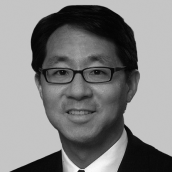
Curtis S. Chin is a former US Ambassador to the Asian Development Bank, the inaugural Asia Fellow of the Milken Institute, and managing director of advisory firm RiverPeak Group, LLC.
Across an expansive, diverse, and dynamic region of some 670 million people, there is hope that 2022 will be a year of re-opening and economic growth for Southeast Asia. The events of 2021 underscored that managing amid unpredictability will be key for government and business leaders, and indeed all travelers in Southeast Asia in the year ahead. With 2022 upon us, Indonesia and Thailand — the region’s two largest economies — and the international financial hub of Singapore in particular are all innovating to draw or welcome back investors, tourists, and aspiring long-term residents.
I experienced first-hand the limited resumption of travel to Southeast Asia as the region looked ahead to this new year. After landing back at JFK Airport in New York City from Singapore last November — my first international trip in nearly two years — I had much to reflect on. Since the start of the pandemic, I had forgone international travel to avoid lengthy upon-arrival quarantine required by numerous Southeast Asian and East Asian nations. For 20 months, like many a one-time digital nomad, once-upon-a-time roving diplomat, or formerly mobile international business executive, I had stayed put in the USA, working from home.

The Covid-19 crisis hit the whole aviation industry, impacting government policies, business prospects, and the ability to travel freely. Pandemic travel restrictions and barriers have risen, fallen, and risen again as new coronavirus variants appeared, but by the last quarter of 2021, hope had re-emerged that a semblance at least of mobility if not normalcy was returning to some Southeast Asian nations.
More and more international travelers were returning to some of the region’s major destinations, and businesses announced major new Southeast Asian investments and manufacturing plans as supply chains evolved. This included the LEGO Group’s planned more-than-USD 1 billion investment in a new manufacturing facility in Vietnam, which is scheduled to be the company’s first carbon neutral factory and create up to 4,000 jobs over the next 15 years. In November 2021, IKEA opened its largest store and first in the Philippines.
My trip back to Southeast Asia was to participate in two major business events in Singapore — the Milken Institute Asia Summit 2021 and the Bloomberg New Economy Forum. Both were hybrid events, combining in-person and virtual elements, that also proved to be case studies in success, as Singapore sought to illustrate how international mobility can be reinvented and reimagined. The Milken Institute’s event alone attracted participants from a dozen countries including the USA, China, India, Indonesia, Japan, the Philippines, South Korea, and the UK. Moving forward, to convene and to connect is possible even amid strict health protocols, whether in person, via hologram, or on screen.
The contrast was clear between Singapore’s step-by-step approach to re-opening and that of the Asia-Pacific region’s other main international financial hub, Hong Kong. That special administrative region of China has remained effectively closed to global mobility, given the requirement for three weeks of quarantine. Government leaders have been understandably focused on Beijing, on business travel, and on what is needed to re-open Hong Kong’s all important border with mainland China.
The benefits of Singapore’s approach are clear as MICE (meetings, incentives, conferences, and events) travel begins to resume. In 2022, the nation’s citizens and visitors are likely to take advantage of a growing number of Vaccinated Travel Lane or ‘safe travel’ flights that allow travel to certain countries without the need for quarantine in Singapore. While steps towards greater restrictions could well lie ahead should more new variants emerge, decisions announced by the government’s ministerial task force reflect the long game that Singapore needs to play as it makes the best of regularly changing circumstances. Yet even as Singapore seeks to lead the way to a new normal of living with the coronavirus, the city-state has faced its own not insignificant ups and downs. At year-end 2021, Singapore's pandemic management, once strict and orderly, saw Omicron “upend quarantine-free travel and confront travelers with chaos.”
While acknowledging the continued downside risk of a resurgence in Covid-19 cases, especially given the emergence of a fast-spreading variant, the Asia Development Bank (ADB) at year-end 2021 was clear in its view for the year ahead: “recovery continues”. Growth forecasts for “developing Asia” were broadly unchanged, revised down slightly from 5.4% to 5.3% for 2022. Overall inflation was projected at 2.7% in 2022.
For Southeast Asia, the ADB’s Asian Development Outlook Supplement for December 2021 projected growth increasing slightly from 5.0% to 5.1% for 2022. This is a marked increase from a 3.0% rate for Southeast Asia in 2021. Leading the way in Southeast Asia for 2022 is Vietnam with a projected 6.5% economic growth rate, followed by the Philippines at 6.0% and Malaysia at 5.9%. Indonesia followed at 5.0%, Singapore at 4.1%, and Thailand at 4.0%, underscoring the importance of these three nations in particular — the region’s two largest economies and the international financial hub of Singapore — to re-think and re-adjust in attracting or welcoming back investors, tourists, and would-be long-term residents.
Singapore’s approach to expanded mobility requires trade-offs, and sacrifices that are unlikely to be followed fully by other Southeast Asian nations given vastly different population and geographic size, costs and available resources, technology levels and enforcement requirements, privacy issues, and national histories. Indeed, a diversity of approaches by other Southeast Asian nations in response to growing wariness of and weariness over the economic impact of blanket Covid-19 travel restrictions is likely good news for would-be expatriates and those exploring residence and citizenship by investment options.
After two years of travel and mobility restrictions, there is hope that expanded access to vaccines will lead to economic and health improvements — as well as a return to greater mobility and connectivity across the region. In 2022, Singapore has along with Japan the most “powerful” passport in the world, with visa-free access to some 192 destinations, and Singaporeans may well be putting their passports to greater use in 2022.
One exception to this hopeful regional outlook from among the 10 member states of the Association of Southeast Asian Nations — Brunei, Cambodia, Indonesia, Laos, Malaysia, Myanmar, Philippines, Singapore, Thailand and Vietnam — is sadly likely to be Myanmar. The nation of more than 54 million people remains divided and troubled following a February 2021 military coup. A consequence of the coup has been a tragic breakdown in the delivery of public health services. In December 2021, ousted democratically elected leader and Nobel Peace Prize laureate Aung San Suu Kyi was sentenced to prison.
At the end of 2021, however, there also came brighter news from the region’s largest nation of 278 million — more than a third of all Southeast Asia’s population — Indonesia. Bloomberg reported that the government had canceled its planned restrictions for the year-end period as Covid-19 vaccination coverage and testing capacity had improved. Asian nations are re-opening, each in its own way.
Over the course of the last year, Bloomberg’s Covid Resilience Ranking has tracked the best and worst places to be during the pandemic. In its end-of-2021 quarterly ranking, several Southeast Asian nations fared poorly, including Indonesia, Malaysia, and the Philippines, which ranked at or near the bottom of the 53 ranked economies.
Yet, over the course of 12 months, the resilience rankings also proved volatile, with the best and worst performers each month fluctuating with the onset of vaccines and the emergence of new variants.
“Countries have been stymied again and again by the vagaries of the biggest health crisis in a generation, but some have also found ways to turn devastating situations around, whether through science, social cohesion or simply learning from the past,” according to Bloomberg. That “past performance is no guarantee of future success — or failure” should provide some reassurance — for the optimists among us — that the nations that make up the vibrant, varied region that is Southeast Asia have in their own hands the ability to rebound and move forward in 2022.